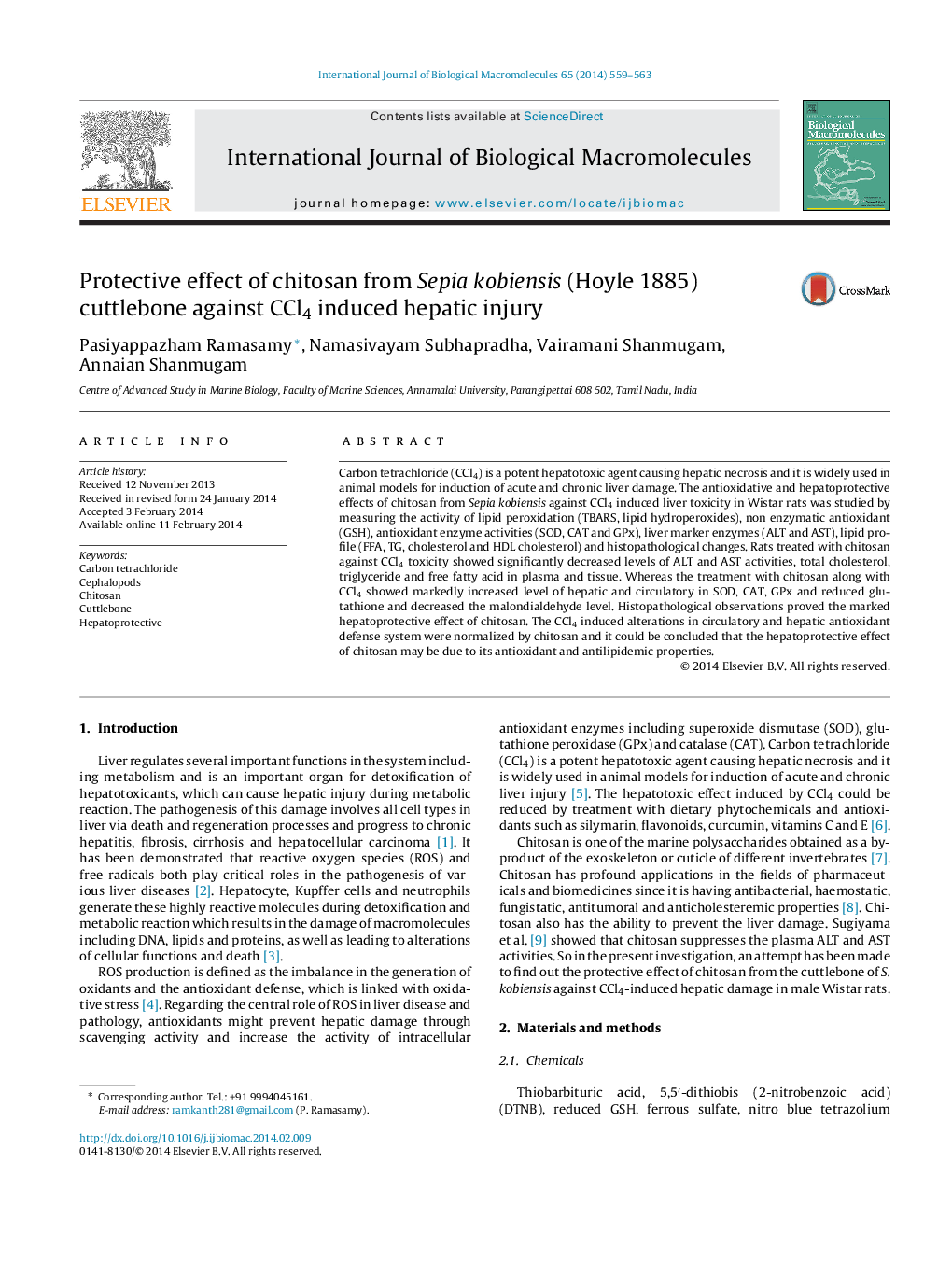| Article ID | Journal | Published Year | Pages | File Type |
|---|---|---|---|---|
| 1986584 | International Journal of Biological Macromolecules | 2014 | 5 Pages |
Carbon tetrachloride (CCl4) is a potent hepatotoxic agent causing hepatic necrosis and it is widely used in animal models for induction of acute and chronic liver damage. The antioxidative and hepatoprotective effects of chitosan from Sepia kobiensis against CCl4 induced liver toxicity in Wistar rats was studied by measuring the activity of lipid peroxidation (TBARS, lipid hydroperoxides), non enzymatic antioxidant (GSH), antioxidant enzyme activities (SOD, CAT and GPx), liver marker enzymes (ALT and AST), lipid profile (FFA, TG, cholesterol and HDL cholesterol) and histopathological changes. Rats treated with chitosan against CCl4 toxicity showed significantly decreased levels of ALT and AST activities, total cholesterol, triglyceride and free fatty acid in plasma and tissue. Whereas the treatment with chitosan along with CCl4 showed markedly increased level of hepatic and circulatory in SOD, CAT, GPx and reduced glutathione and decreased the malondialdehyde level. Histopathological observations proved the marked hepatoprotective effect of chitosan. The CCl4 induced alterations in circulatory and hepatic antioxidant defense system were normalized by chitosan and it could be concluded that the hepatoprotective effect of chitosan may be due to its antioxidant and antilipidemic properties.
